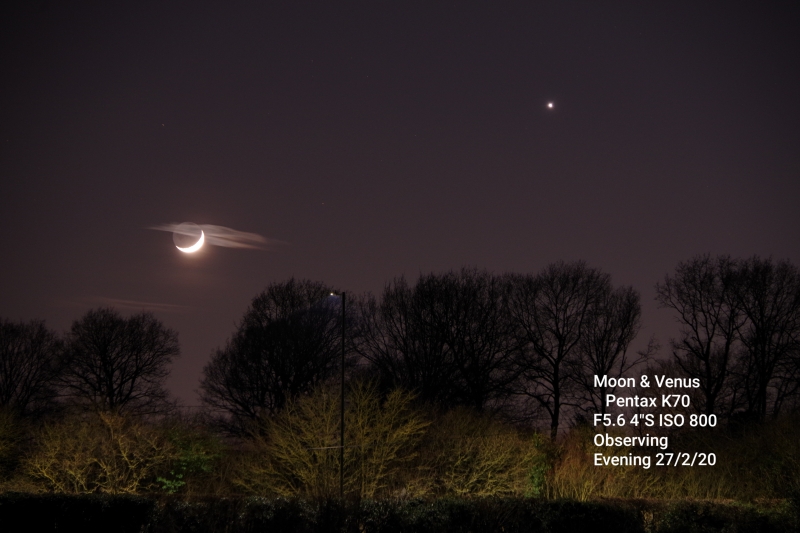[et_pb_section fb_built="1" _builder_version="3.22"][et_pb_row _builder_version="3.25" background_size="initial" background_position="top_left" background_repeat="repeat"][et_pb_column type="4_4" _builder_version="3.25" custom_padding="|||" custom_padding__hover="|||"][et_pb_text _builder_version="3.27.4"]
The Horsehead Nebula (also known as Barnard 33 in bright nebula IC 434) is a dark nebula in the constellation of Orion.
The nebula is located just below Alnitak, the star furthest left on Orion's Belt, and is part of the much larger Orion Molecular Cloud Complex. It is approximately 1500 light years from Earth. It is one of the most identifiable nebulae because of the shape of its swirling cloud of dark dust and gases, which is similar to that of a horse's head. The shape was first noticed in 1888 by Williamina Fleming on photographic plate B2312 taken at the Harvard College Observatory.
The red glow originates from hydrogen gas (hydrogen alpha) predominantly behind the nebula, ionized by the nearby bright star Sigma Orionis. The darkness of the Horsehead is caused mostly by thick dust, although the lower part of the Horsehead's neck casts a shadow to the left. Streams of gas leaving the nebula are funnelled by a strong magnetic field. Bright spots in the Horsehead Nebula's base are young stars just in the process of forming.
[/et_pb_text][/et_pb_column][/et_pb_row][et_pb_row column_structure="1_4,3_4" _builder_version="3.25" background_size="initial" background_position="top_left" background_repeat="repeat"][et_pb_column type="1_4" _builder_version="3.25" custom_padding="|||" custom_padding__hover="|||"][et_pb_text admin_label="JT Image" _builder_version="3.27.4"]

[/et_pb_text][/et_pb_column][et_pb_column type="3_4" _builder_version="3.25" custom_padding="|||" custom_padding__hover="|||"][et_pb_text _builder_version="3.27.4"]
Image by Julian Tworek,
Widefield 4" Semi-Apo refractor and Canon DSLR
[/et_pb_text][/et_pb_column][/et_pb_row][et_pb_row column_structure="1_4,3_4" _builder_version="3.25" background_size="initial" background_position="top_left" background_repeat="repeat"][et_pb_column type="1_4" _builder_version="3.25" custom_padding="|||" custom_padding__hover="|||"][et_pb_text admin_label="JT Image" _builder_version="3.27.4"]

[/et_pb_text][/et_pb_column][et_pb_column type="3_4" _builder_version="3.25" custom_padding="|||" custom_padding__hover="|||"][et_pb_text admin_label="Julian Tworek Text" _builder_version="3.27.4"]
Imaged By Julian Tworek
80mm Orion ED Refractor, MX716 CCD
[/et_pb_text][/et_pb_column][/et_pb_row][et_pb_row column_structure="1_4,3_4" _builder_version="3.25" background_size="initial" background_position="top_left" background_repeat="repeat"][et_pb_column type="1_4" _builder_version="3.25" custom_padding="|||" custom_padding__hover="|||"][et_pb_text admin_label="KR Image" _builder_version="3.27.4"]

[/et_pb_text][/et_pb_column][et_pb_column type="3_4" _builder_version="3.25" custom_padding="|||" custom_padding__hover="|||"][et_pb_text admin_label="Keith Rickard Text" _builder_version="3.27.4"]
Imaged By Keith Rickard
SBIG ST7-XME CCD camera, 8" Meade LX200 Schmidt Cassegrain Classic at F3.3, 30 x 2min in red, green and luminance and 10 x 2min in blue
[/et_pb_text][/et_pb_column][/et_pb_row][et_pb_row column_structure="1_4,3_4" _builder_version="3.25" background_size="initial" background_position="top_left" background_repeat="repeat"][et_pb_column type="1_4" _builder_version="3.25" custom_padding="|||" custom_padding__hover="|||"][et_pb_text admin_label="SD Image" _builder_version="3.27.4"]

[/et_pb_text][/et_pb_column][et_pb_column type="3_4" _builder_version="3.25" custom_padding="|||" custom_padding__hover="|||"][et_pb_text admin_label="Simon Dawes Text" _builder_version="3.27.4"]
Image by Simon Dawes
Skywatcher MN190, EQ6Pro, Canon 600D (Full Spectrum Mod) CLSCCD Filter
45 minutes Integration, Bexleyheath, England.
[/et_pb_text][/et_pb_column][/et_pb_row][et_pb_row column_structure="1_4,3_4" _builder_version="4.3.2"][et_pb_column type="1_4" _builder_version="4.3.2"][et_pb_text admin_label="Image by KL" _builder_version="4.3.2"]

[/et_pb_text][/et_pb_column][et_pb_column type="3_4" _builder_version="4.3.2"][et_pb_text _builder_version="4.3.2"]
NGC2024 Flame Nebula + Horsehead Nebula By Kevin Langford
ES 102ED APO, EQ5 Pro
ZWO ASI071, Orion MMAG, UHC filter & Ha filter.
2.5hrs of exposures (1.5hrs in Ha exposures)
18/01/2020
Bexley, Kent.
[/et_pb_text][/et_pb_column][/et_pb_row][et_pb_row _builder_version="4.7.7" _module_preset="default"][et_pb_column type="4_4" _builder_version="4.7.7" _module_preset="default"][et_pb_text admin_label="Images by Leigh Slomer" _builder_version="3.19.3" global_module="3217" saved_tabs="all"]
Images by Leigh Slomer
[/et_pb_text][et_pb_text _builder_version="4.7.7" _module_preset="default" hover_enabled="0" sticky_enabled="0"]
[caption id="" align="aligncenter" width="800"] Image by Leigh Slomer A couple of hours work during a rare gap in the clouds.[/caption]
Image by Leigh Slomer A couple of hours work during a rare gap in the clouds.[/caption]
[/et_pb_text][/et_pb_column][/et_pb_row][/et_pb_section]
 Image by Jim of the Moon and Venus[/caption][caption id="" align="aligncenter" width="600"]
Image by Jim of the Moon and Venus[/caption][caption id="" align="aligncenter" width="600"] Image by Leigh of the Flame Nebula and the Horsehead Taken at Sutton-at-Hone[/caption]
Image by Leigh of the Flame Nebula and the Horsehead Taken at Sutton-at-Hone[/caption]





 Image by Leigh Slomer A couple of hours work during a rare gap in the clouds.[/caption]
Image by Leigh Slomer A couple of hours work during a rare gap in the clouds.[/caption]